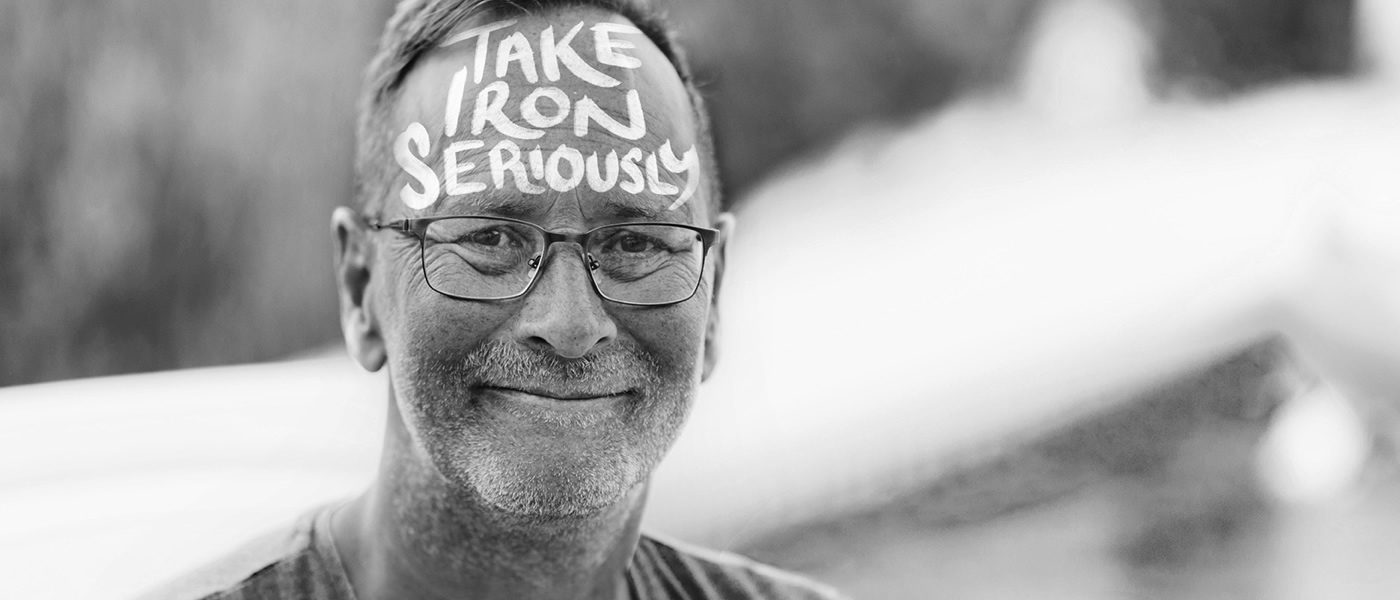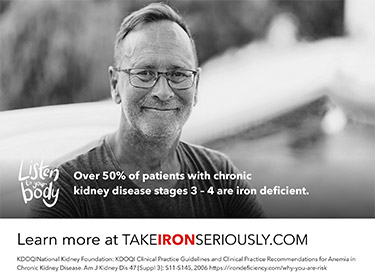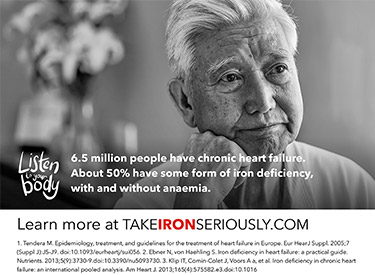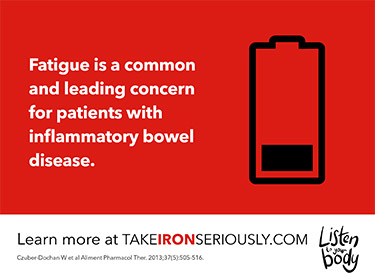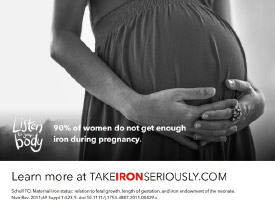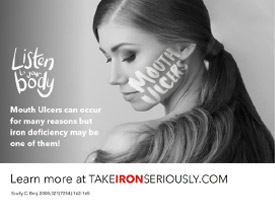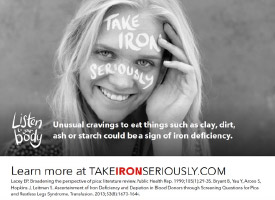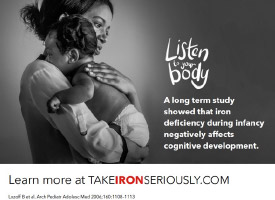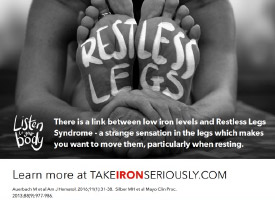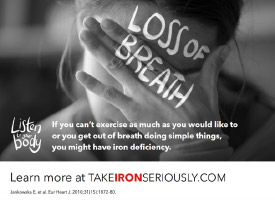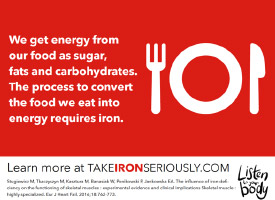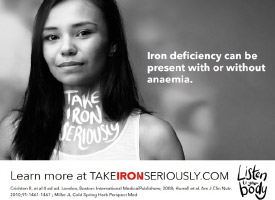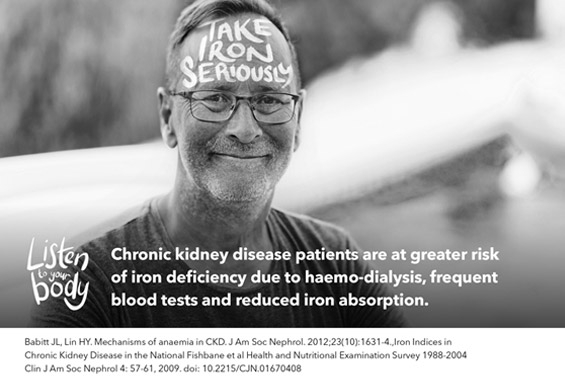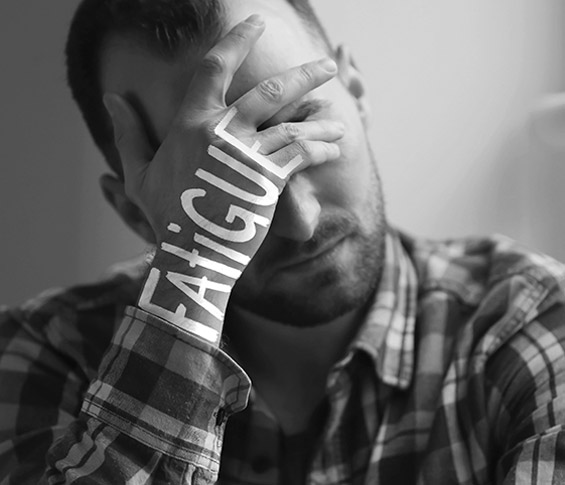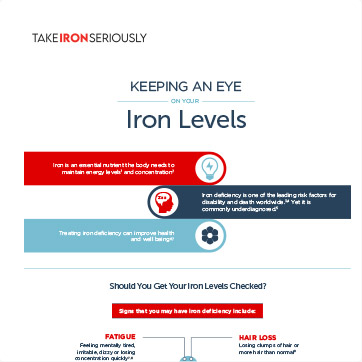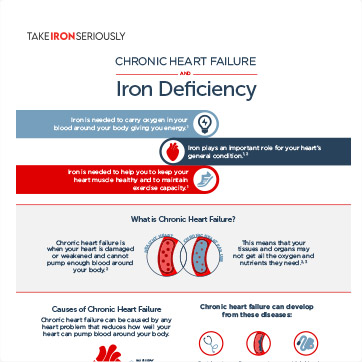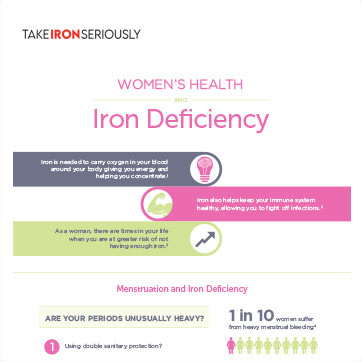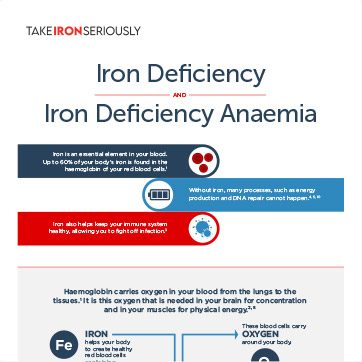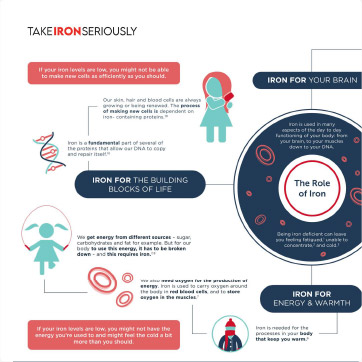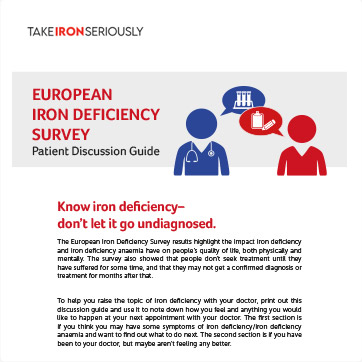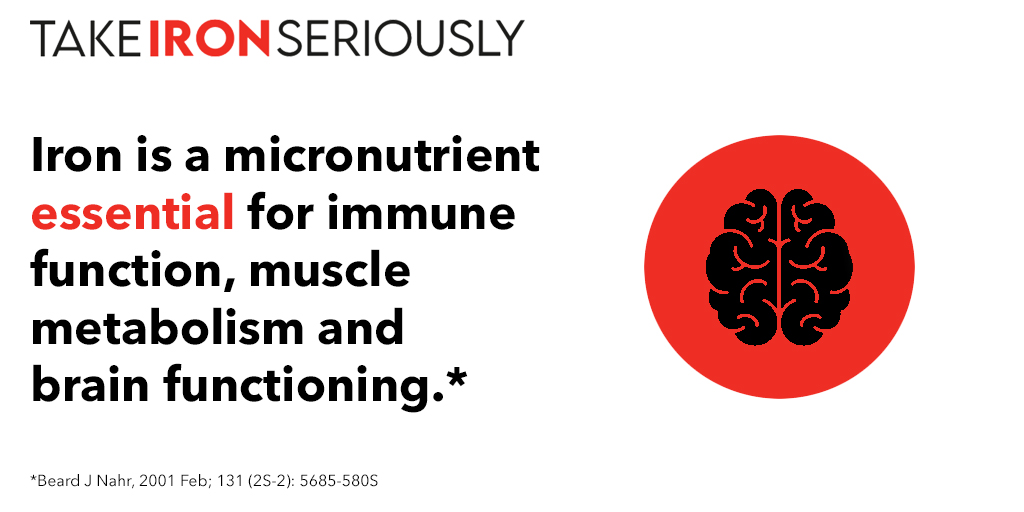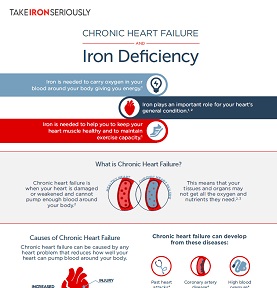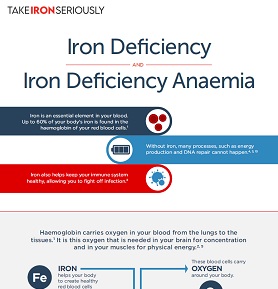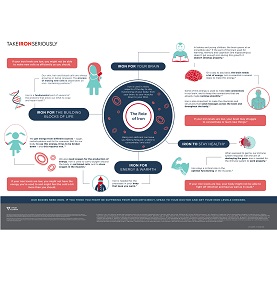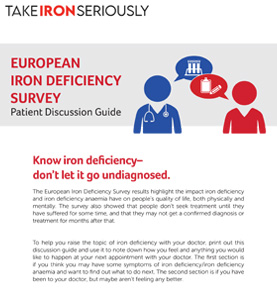- Okonko 2011 J Am Coll Cardiol. 2011;58(12):1241-1251. doi:10.1016/j.jacc.2011.04.040
- WHO. Iron Deficiency Anemia. Assessment, Prevention, and Control. A Guide for Programme Managers. 2001.
- Goodnough Transfusion. 2012 Jul;52(7):1584-92. doi: 10.1111/j.1537-2995.2011.03495.x. Epub 2011 Dec 29.
- Radbruch L, Sabatowski R, Elsner F et al. Validation of the German version of the brief fatigue inventory. J Pain Symptom Manage 2003;25:449–458.
- Lewis G, Wessely S. The epidemiology of fatigue: more questions than answers. J Epidemiol Community Health 1992;46:92–97.
- Bergner M, Bobbitt R, Carter W et al. The Sickness Impact Profile: development and final revision of a health status measure. Med Care 1981;19:787–805.
- Bowers S, Cannizzaro K, Gregus J et al. Outcomes in cardiopulmonary physical therapy: sickness impact profile. Cardiopulm Phys Ther J 2009;20:–19.
- Witte KK, Clark AL. Why does chronic heart failure cause breathlessness and fatigue? Prog Cardiovasc Dis 2007;49:366–384.
- Nijrolder I, van der Windt D, de Vries H et al. Diagnoses during follow-up of patients presenting with fatigue in primary care. CMAJ 2009;181:683–687.
- Hurrell R, Egli I. Iron bioavailability and dietary reference values. Am J Clin Nutr. 2010;91:1461-1467. doi:10.3945/ajcn.2010.28674F.Am.
- Killip S, Bennett JM, Chambers MD. Iron deficiency anemia. Am Fam Physician. 2007;75(5):671-8.
- Schümann K, Elsenhans B, Mäurer a. Iron supplementation. J Trace Elem Med Biol. 1998;12(3):129-40. doi:10.1016/S0946-672X(98)80001-1.
- USDA National Nutrient Database for Standard Reference , Release 25 USDA National Nutrient Database for Standard Reference , Release 25. Available at: https://www.ars.usda.gov/SP2UserFiles/Place/12354500/Data/SR25/nutrlist/....
- Penney DS, Miller KG. Nutritional counseling for vegetarians during pregnancy and lactation. J Midwifery Womens Health. 2008;53(1):37-44. doi:10.1016/j.jmwh.2007.07.003.
- Evans EC. The FDA recommendations on fish intake during pregnancy. J Obstet Gynecol Neonatal Nurs. 2002;31(6):715-20.
- Hartmann S, Brørs O, Bock J, et al. Exposure to retinoic acids in non-pregnant women following high vitamin A intake with a liver meal. Int J Vitam Nutr Res. 2005;75(3):187-94.
- World Health Organization. Iron deficiency anaemia. Assessment, prevention and control: A guide for programme managers.; 2001:1-114.
- Evans EC. The FDA recommendations on fish intake during pregnancy. J Obstet Gynecol Neonatal Nurs. 2002;31(6):715-20.
- Michael Alleyne, McDonald K. Horne, MDb, and Jeffery L. Miller M. Individualized treatment for iron deficiency anemia in adults. Am J Med. 2008;121(11):943-948. doi:10.1016/j.amjmed.2008.07.012.Individualized.
Deficit železa vzniká, ak množstvo železa, ktoré sa vstrebáva do organizmu, nedokáže pokryť jeho potreby. To môže byť spôsobené nedostatočným prísunom železa v strave alebo rôznymi chorobnými stavmi, ktoré vedú k zvýšenému úbytku železa alebo nedostatočnému zužitkovaniu železa. Nedostatok železa možno vnímať ako kontinuum, pohybujúce sa od takmer normálnej hladiny železa, cez deficit železa bez anémie až po najťažšiu formu – deficit železa s anémiou.1,2 Vzhľadom na túto skutočnosť sa anémia často používa ako ukazovateľ pre deficit železa. Aj pri miernej až stredne závažnej forme deficitu železa, ktorý ešte nepokročil do anémie, však trpia tkanivá nedostatkom železa a je narušená ich funkcia.2 Pojmy „anémia“, „deficit železa“ a „anémia z nedostatku železa“ sú občas vzájomne zamieňané, čo nie je správne.2
Homeostázu železa môže narušiť aj chronické ochorenie a zápal, ktoré môžu blokovať vstrebávanie železa v čreve, aj transport železa. Tento stav môže dokonca viesť k anémii chronických ochorení.3
Vyčerpanosť je nešpecifický príznak, s najrôznejšími príčinami. Možno ju charakterizovať ako multidimenzionálny stav zahŕňajúci fyzické vysilenie, psychickú únavu a nedostatok energie.4 Ide o závažný zdravotný problém, keďže sa spája s porovnateľným postihnutím, aké môžeme nájsť u pacientov s chronickými ochoreniami,5 ako je napríklad chronické zlyhávanie srdca, chronická obštrukčná choroba pľúc a reumatoidná artritída.4,5,6,7,8 Vyčerpanosť má výrazný nežiaduci vplyv na kvalitu života a považuje sa za fenomén so sociálnym, fyziologickým a psychologickým rozmerom.9

Ak pociťujete extrémnu únavu alebo máte iné príznaky deficitu železa, je dôležité zamyslieť sa, či váš jedálny lístok obsahuje dostatok železa. Konzumácia potravín bohatých na železo je najjednoduchšia cesta, ako môžete zvýšiť svoju hladinu železa a zmierniť únavu.
10
Za normálnych okolností môžete získať všetko železo, ktoré vaše telo potrebuje, zo zdravej, vyváženej stravy.10 Môže sa však stať, že vaša strava neobsahuje dostatok potravín bohatých na železo, hoci je inak zdravá. To platí predovšetkým pre vegetariánov a vegánov, ktorým hrozí vyššie riziko deficitu železa.11 Železo prijímané z rastlinných zdrojov, známe aj ako nehémové železo, sa však do tela vstrebáva horšie ako železo pochádzajúce zo živočíšnych zdrojov. Mieru vstrebávania železa z rastlinných zdrojov vo väčšej miere ovplyvňujú aj iné potraviny a nápoje, ktoré konzumujeme približne v rovnakom čase.10 V nasledujúcej tabuľke sú uvedené príklady potravín bohatých na železo.
Takisto je možné, že hoci v minulosti vaša strava pokrývala potrebu železa vášho tela, nedávno došlo k zmene vašich životných okolností a teraz váš aktuálny príjem železa nedokáže pokryť zvýšené požiadavky. Taká situácia môže nastať, napríklad ak ste tehotná alebo ak ste podstúpili operáciu. Mali by ste preto popremýšľať, ako môžete zvýšiť množstvo železa v strave tak, aby vaša hladina železa bola opäť v rovnováhe.
Existuje celý rad potravín bohatých na železo, ktoré môžete konzumovať vo väčšom množstve a zvýšiť tak svoju hladinu železa. Mäsité potraviny obsahujúce hémové železo12 aj vitamín C vám pomôžu lepšie vstrebávať nehémové železo. Snažte sa pravidelnejšie jesť potraviny s vysokým obsahom železa a zároveň dbajte na to, aby ste v jednom pokrme kombinovali hemové a nehémové zdroje železa (napríklad červené mäso a špenát) alebo jedlo doplňte o zdroj vitamínu C (napríklad pohár pomarančovej šťavy). Týmto spôsobom môžete zvýšiť príjem železa.
| Zdroje železa (živočíšne)13 | Zdroje železa (rastlinné)14 |
|---|---|
| Ustrice | Sójové produkty |
| Mušle | Šošovica |
| Červené mäso, napr. hovädzina | Fazuľa |
| Pečeň | Tofu |
| Morčacie alebo kuracie droby | Špenát |
| Ryby | Melasa |
| Celozrnný chlieb | |
| Hrach | |
| Sušené ovocie (napr. sušené marhule, slivky a hrozienka) | |
| Obilniny a klíčky s vyšším obsahom železa (podrobnosti o obsahu železa nájdete na obale)13 |
| Potraviny, ktoré podporujú vstrebávanie železa | Potraviny znižujúce vstrebávanie železa |
|---|---|
| Mäso/hemové zdroje železa12 | Čaj a bylinné vývary všeobecne15 |
| Vitamín C, napr. citrusové ovocie16 | Káva17 |
| Mlieko17 | |
| Mliečne produkty17 |
*Vápnik v mlieku a mliečnych produktoch môže znižovať vstrebávanie železa v živočíšnych aj rastlinných zdrojoch, narozdiel od iných inhibítorov, ktoré ovplyvňujú iba nehémové zdroje železa.1
Ak ste tehotná alebo sa snažíte otehotnieť, porozprávajte sa s lekárom alebo pôrodnou asistentkou o najvhodnejších potravinách so zvýšeným obsahom železa vzhľadom k tomu, že niektoré potraviny, napr. pečeň16 alebo určité druhy rýb18 by ste mali počas tehotenstva vynechať.
Podobne ak trpíte rôznymi alergiami alebo stravovacími obmedzeniami, napríklad celiakiou, zápalovým ochorením čreva prípadne ste podstúpili operáciu žalúdka, porozprávajte sa so svojim lekárom alebo výživovým poradcom o potravinách, ktoré zvyšujú príjem železa. V prípade potreby vám lekár môže odporučiť výživové doplnky obsahujúce železo, ako sú tabletky alebo intravenózne železo, aby stav železa dosiahol zdravé hodnoty. Môže vám ich odporučiť aj vtedy, ak máte anémiu z nedostatku železa, kedy strava samotná zvyčajne nepostačuje, aby nahradila stratu železa.19 Hneď ako sa obnoví hladina železa vo vašom tele, konzumovanie stravy s vysokým obsahom železa je dobrý spôsob ako udržať hladinu železa v normále.
- Okonko 2011 J Am Coll Cardiol. 2011;58(12):1241-1251. doi:10.1016/j.jacc.2011.04.040
- WHO. Iron Deficiency Anemia. Assessment, Prevention, and Control. A Guide for Programme Managers. 2001.
- Goodnough Transfusion. 2012 Jul;52(7):1584-92. doi: 10,1111/j.1537-2995,2011.03495.x. Epub 2011 Dec 29.
- Radbruch, L., Sabatowski, R., Elsner, F., et al. Validation of the German version of the brief fatigue inventory. J Pain Symptom Manage 2003;25:449–458.
- Lewis, G., Wessely, S. The epidemiology of fatigue: more questions than answers. J Epidemiol Community Health 1992;46:92–97.
- Bergner, M., Bobbitt, R., Carter, W., et al. The Sickness Impact Profile: development and final revision of a health status measure. Med Care 1981;19:787–805.
- Bowers, S., Cannizzaro, K., Gregus, J., et al. Outcomes in cardiopulmonary physical therapy: sickness impact profile. Cardiopulm Phys Ther J 2009;20:–19.
- Witte, K. K., Clark, A. L. Why does chronic heart failure cause breathlessness and fatigue? Prog Cardiovasc Dis 2007;49:366–384.
- Nijrolder, I., van der Windt, D., de Vries, H., et al. Diagnoses during follow-up of patients presenting with fatigue in primary care. CMAJ 2009;181:683–687.
- Hurrell, R., Egli, I. Iron bioavailability and dietary reference values. Am J Clin Nutr. 2010;91:1461-1467. doi:10.3945/ajcn.2010.28674F.Am.
- Killip, S., Bennett, J. M., Chambers, M. D. Iron deficiency anemia. Am Fam Physician. 2007;75(5):671-8.
- Schümann, K., Elsenhans, B., Mäurer, A. Iron supplementation. J Trace Elem Med Biol. 1998;12(3):129-40. doi:10.1016/S0946-672X(98)80001-1.
- USDA National Nutrient Database for Standard Reference , Release 25 USDA National Nutrient Database for Standard Reference , Release 25. Dostupné na adrese: https://www.ars.usda.gov/SP2UserFiles/Place/12354500/Data/SR25/nutrlist/....
- Penney, D. S., Miller, K. G. Nutritional counseling for vegetarians during pregnancy and lactation. J Midwifery Womens Health. 2008;53(1):37-44. doi:10.1016/j.jmwh.2007.07.003.
- Evans, E. C. The FDA recommendations on fish intake during pregnancy. J Obstet Gynecol Neonatal Nurs. 2002;31(6):715-20.
- Hartmann, S., Brørs, O., Bock, J., et al. Exposure to retinoic acids in non-pregnant women following high vitamin A intake with a liver meal. Int J Vitam Nutr Res. 2005;75(3):187-94.
- World Health Organization. Iron deficiency anaemia. Assessment, prevention and control: A guide for programme managers.; 2001:1-114.
- Evans, E. C. The FDA recommendations on fish intake during pregnancy. J Obstet Gynecol Neonatal Nurs. 2002;31(6):715-20.
- Michael, A., McDonald, K. H., MD, a Jeffery, L. M., MD. Individualized treatment for iron deficiency anemia in adults. Am J Med. 2008;121(11):943-948. doi:10.1016/j.amjmed.2008.07.012.Individualized.

